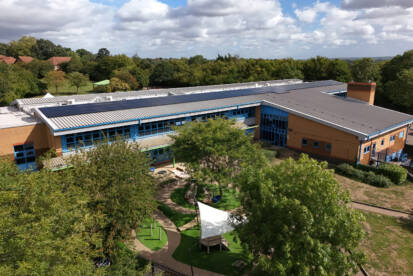Insulating Heritage Properties
Fitting insulation into two heritage flats to improve energy efficiency

- Installation of internal wall insulation in two flats
- Consultation with heritage planning throughout
- New boiler, pipework and radiators fitted into one of the flats
- Re-plastering and re-painting of flats
- New kitchen and bathroom fitted in one of the flats
- Replacement of damaged window sills
Heritage properties are small slices of history, which means that they need a little extra looking after in order to preserve them for the future. However, this also means that things can be a little trickier when it comes to outfitting them for greater energy efficiency.
In Camden, the Grade II listed Levita House had two vacant flats that needed a boost in terms of internal insulation. However, due to their preservation orders, this work needed to be completed without drastically altering the properties or damaging their original features.
This meant that careful installation would be required, and that work would need to be carried out in accordance with observations from a heritage officer.
Camden Council therefore called on our experienced team to fit new internal installation while staying true to the preservation order.
This internal wall insulation project is part of the Future Neighbourhoods 2030 programme taking place in the Somers Town area. Camden Council is working in partnership with the Greater London Authority on this programme which includes works to improve the energy efficiency of social housing.

The Challenge
Both properties were void, which meant that they didn’t have to be tackled on a room-by-room basis. However, the heritage requirements on both flats meant that our team would need to quickly get to grips with what could be done to stay within the parameters set out by the heritage officer.
One of the flats was more complicated than the other. In order for insulation to be fitted, anything attached to an exterior wall needed to be removed. This meant that a new kitchen and bathroom would be needed – and that these new fittings would have to meet the current Building Regulations.
The Solution
Our team worked closely with the heritage officer from the very beginning, before entering into the planning and execution stage. Through this process we gained invaluable knowledge about what could be done to each flat, and what had to be protected.
In the first flat, installation of insulation was more straightforward than in the second. We fitted SWIP insulation, in which insulated battens are screwed to the wall. This provided an additional 90mm of insulation to the property. This was then covered with membranes before being plastered over and repainted.
To remove cold bridging around windows, 12.5mm insulation boards were then fitted around them.
In the second flat, everything that was attached to the exterior walls needed to be removed in order for the insulation to be fitted. We therefore removed the existing boiler, flue, radiators and electrical outlets, as well as the kitchen and bathroom units. Boxing in the boiler cupboard, bedroom and living room was also removed to provide access to the flat’s pipework and ducting.

The insulation is predicted to bring down the heating bills of the properties by around one-third.
Insulation was then fitted in the same way as the first flat. A new boiler and flue were installed too, with careful attention paid to the surrounding brickwork and cement. In order to abide by the preservation order, our team carefully sourced matching bricks and cement so that the wall’s appearance remained unchanged.
Due to the need for a new heating system, we consequently worked towards the new Part L standards detailed in the updated Building Regulations. To ensure our proposed installations met the new requirements on energy efficiency, we carried out careful heat loss calculations before getting started. Once these were satisfactory, a new kitchen and bathroom was installed into the flat.
When the installations were finished, radiators and electrical outlets were put back in place, and pipework was re-boxed.
Our team then rose to the challenge of rebuilding both flats’ window sills. A previous asbestos inspection had unfortunately led to them being removed from the properties. In order to meet the heritage requirements, we fabricated matching versions to replace them.
We knew it was going to be a more complicated process than a usual job due to the flats being Grade II Listed. The project was well planned by Aston Group which ensured it ran as smoothly as possible.
The Results
Both flats now have robust internal insulation, despite the challenging circumstances brought about by their listed status.
This work was all carried out in accordance with Historic England and the advice of a heritage officer. This meant that where materials needed to be replaced, our team found matching materials.
As a result of our installations, the insulation is predicted to bring down the heating bills of the properties by around one-third.
In addition, the project has been submitted to Trustmark, even though the project was not funded. This is because the client wanted to demonstrate how insulation can work in heritage properties and be conducted through PAS2035.
"I was pleased with our experience of working with them. It was a complex job due to the heritage of the building, but Aston Group were able to follow all of the processes well to ensure it was completed correctly.
The two flats have both been completed to a good standard which comfortably met our expectations. I have already recommended Aston Group to a colleague for retrofit works on another group of properties in heritage buildings.
Thanks for the good work."
Ryan Keep, Energy Performance Manager, Camden Council



